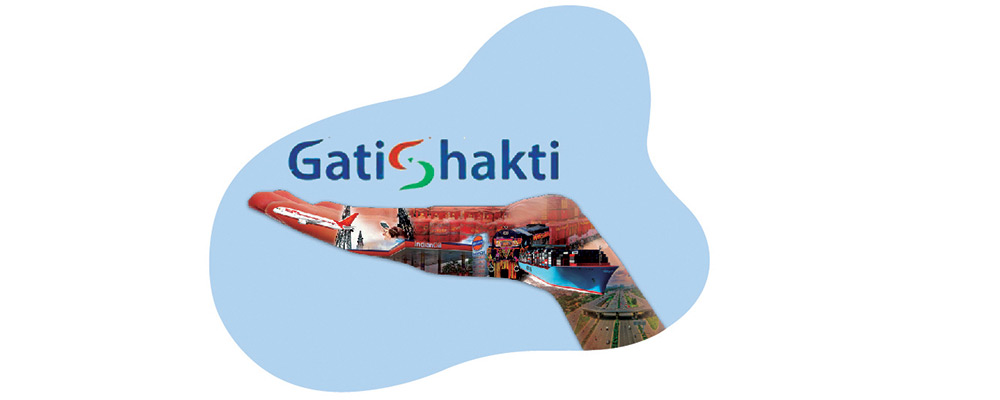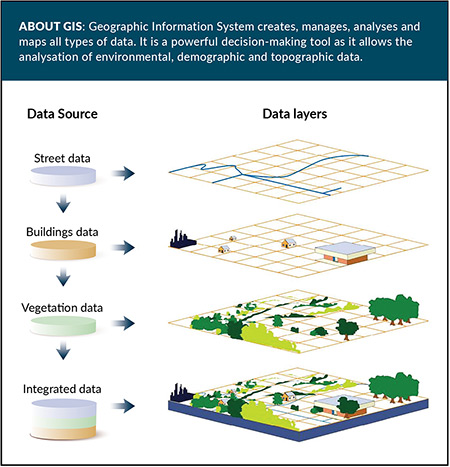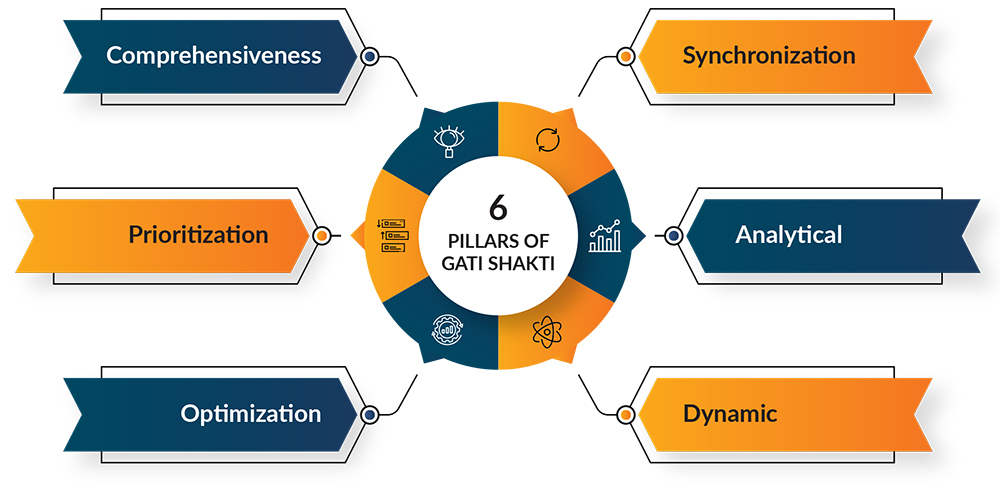
Sixteen ministries, multiple departments, various roles, and numerous projects – all interconnected and updated into a single platform for visibility for information and decision making by relevant stakeholders. Holistically building the nation and its infrastructure to provide growth, speed, and power. Gati Shakti - Synergy Brings Speed And Power, is the National Master Plan for multi-modal connectivity.

While India is successfully implementing multiple projects that are monitored via multiple systems, there have been however some delays, cost over-runs and slow progress at times. It boiled down to a simple cause: asymmetry in information due to working in silos. This led to bringing a paradigm shift in infrastructure planning and administration. Gati Shakti - Synergy Brings Speed And Power is a true master plan with both physical and digital ecosystem integration forming its base foundation. Physical infrastructure across the nation will have its entire information on a single platform shared across various participating stakeholders for visibility into project milestones. The digital portal of Gati Shakti - Synergy Brings Speed And Power is empowered by various modern technologies and tools. For example the usage of GIS with over 200 layers of evidence-based decision making, Indian Space Research Organisation (ISRO) enabled satellite imagery for monitoring, Application Programming Interface (API) based platform making it open source, dashboards with analytics and much more to plan and coordinate the Indian infrastructure to provide visibility. The digital portal will warrant timely clearances, seamless flow of information, any flagging of potential issues for integrated planning as well as coordinated implementation of infra connectivity projects for industrial cluster and economic nodes from the past, present and future.
Infrastructure projects will include the combination of all modes – railways, roadways, waterways, and airways. Instead of planning and designing in silos, it will institutionalize holistic planning and execution through technology, cross-sectoral interactions, identification of critical gaps, better visibility to the executing agency, synchronizing and coordination between various departments (inter & intra ministries) powered by analytics.
For example, the road laying authorities prior to closure of the construction of a new road, will have the intervention of the telecom ministry to establish the networks and from the designated gas distribution authority to lay the gas pipeline to serve the related area. This will lead to reduced costs, reduction in any delays and on-time readiness of the required infrastructure. There would be data taken for planning this project, plotted onto GIS layers and current status and images will be available through the satellite imagery. Stakeholders can identify the project details, connectivity and take an informed decision while investing in the project. The scope of the project expands to all projects in the past, present and the future to be part of this plan.

Another example is a new port project that will be assisted through roadways and railways that interconnect thus reducing much of the current infrastructure issues around a port such as road congestions, higher llogistics costs and much more.
Gati Shakti - Synergy Brings Speed And Power will give more speed and power not only to the said infrastructure projects but also other initiatives such as the Bharatmala and Sagarmala. With the outlook of further bringing new policies and ways of implementing the Gati Shakti - Synergy Brings Speed And Power initiative we may observe a much more connected approach between the public and private sector. Reports such as the Logistics Ease Across Different States (LEADS) reports, details in the Pragati platform will also become more seamless and robust. Synergy between different ministries and different modes makes it a truly integrated approach.
Earlier, llogistics was considered a cost center while we can say through this it will be taking steps towards being a profit center especially when we look at MSMEs or even larger organisations. They have better reach, a more efficient supply chain and more visibility. This will be possible through the implementation of this plan.

Like any digital portal, it is important for it to be well designed and developed but most importantly its users are made aware. While the core of the system and the technologies are in place, for the right outcome, there must be adoption from the top to the bottom of the infrastructure chain. The input of information is as crucial for the expected outcomes, as are the results we can envisage from this plan.
A vast master plan as it sounds, has started to be implemented from the center and through regional conferences will be discussed from concept to execution to the state down to the local governments and be accessible to stakeholders working on these projects, citizens and investors within the next few months. The foundation of the concept is strength while its execution and adoption with feeding of the right information real time, will bring out its promising benefits.
More to come in the near future is the setup, implementation, and execution of the master plan with the ruffles of risks, resilience, maintenance, resource planning, monetisation, and adoption.